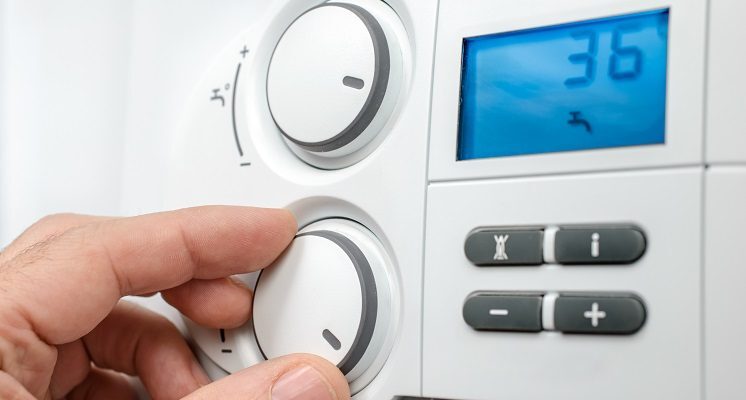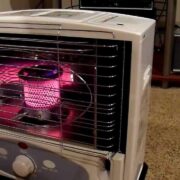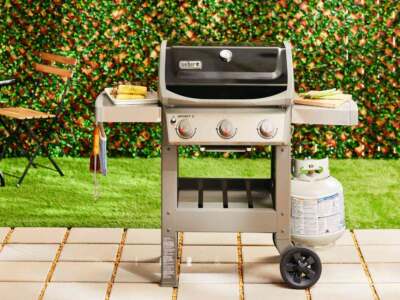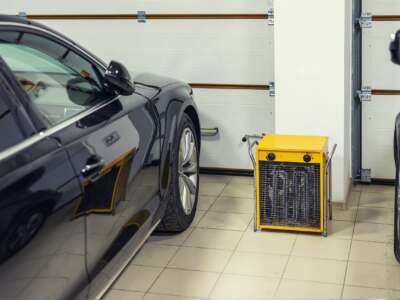Level up the comfort in your home by introducing a smart thermometer to your household technology. An advanced and convenient way to control your heating system, this thermostat can be controlled remotely so you can keep on top of your energy usage and look after the pennies too!
Smart thermostats have three main components: a hub, receiver, and thermostat. The hub connects to your broadband router and the receiver connects to your boiler. This enables you to remotely control your heating using a smartphone and allows the thermostat to communicate with the receiver to adjust the heating based on your preferences and habits.
We know finances are tight for many right now, especially with heating bills, but our guide is here, not only to teach you how a smart thermostat works, but also how it can ensure you have an energy efficient, money saving heating system. So don’t miss out on this great life hack, read on for more!
Key Takeaways
- Smart thermostats provide remote access to your heating system allowing you to greater control on your energy usage and spend at all times.
- You can turn your existing boiler into a smart boiler by installing a smart thermostat.
- Installing a smart thermostat can save you up to 31% on your heating bill.
Smart Thermostat | Features Overview
Level up your heating system with a smart thermostat. Here’s an overview of the key features:
- Remote access and control: Control your home heating system from anywhere using a smartphone app, tablet, or computer.
- Learning and adaptive technology: Smart thermostats can learn your heating habits and adjust the temperature of your home to optimise your heating schedule to save energy and money.
- Geofencing: Some smart thermostats can use your smartphone’s location to detect when you’re away from home and adjust the temperature, helping to save energy and reduce bills.
- Integration with voice assistants: Many smart thermostats are compatible with popular voice assistants, like Amazon Alexa, so you can control your home heating with voice commands.
- Energy usage reports: Smart thermostats can provide detailed reports on your energy usage, helping you to identify ways to save money and reduce your carbon footprint.
- Compatibility with different heating systems: Smart thermostats are designed to work with a wide range of heating systems, including gas boilers, electric heaters, and underfloor heating systems.
Can I turn my boiler into a smart boiler?
A smart boiler uses advanced technology that makes it easier to control as well as more energy efficient. Some smart boilers can also work with smart thermostats, allowing you to control both your heating system and boiler from a single app, or device.
The good news is that you can turn your existing boiler, whether it is gas, electric, or oil, into a smart boiler by installing a smart thermostat. This will connect to your home’s heating system using the Wi-Fi network so you can alter the temperature remotely.
If you have basic DIY skills, you can even install a smart thermostat yourself, although, if you don’t feel confident doing this, we would recommend using a heating engineer.
Can you add a smart thermostat to any boiler?
In the majority of instances, you will be able to add a smart thermostat to your boiler. We would, however, advise checking that the smart thermostat is compatible with your boiler before installation as they aren’t all created equally meaning that some may be better suited to certain boiler types, such as a combi boiler.
There can also be troubleshooting issues that occur when incompatible systems are combined. Older boilers, for instance, may not have suitable wiring for a smart thermostat so you may need to install a separate receiver or adaptor to enable communication between the two.
Some suitable boilers include:
How to connect thermostat to boiler | Step-by-step guide
The process for connecting a thermostat to a boiler can vary depending on the specific model of thermostat and boiler you are using, so always consult the instruction manual. However, here is a general guide that can help you get started:
- Turn off the boiler: Before you start work, turn off the power to the boiler.
- Wiring types: Consult the user manual to establish the type of wiring in your heating system as this will determine the type of thermostat you can use.
- Compatible thermostats: Once you know the type of wiring in your heating system, you can choose a thermostat that is compatible with your boiler.
- Install the receiver or adapter: If your thermostat requires a separate receiver or adapter, you will need to install this device between the thermostat and the boiler. This may involve wiring the receiver to the boiler’s control panel.
- Connect the thermostat: Once the receiver or adapter is installed, you can connect the thermostat to the receiver.
- Set up the thermostat: Once the thermostat is connected to the receiver, you can set up the programming and configure any additional features or settings.
- Test the system: Once everything is connected and set up, turn the power back on and test the thermostat’s control of the heating system.
Frequently Asked Questions
How much does it cost to install a smart thermostat?
Whilst the cost of fitting a smart thermostat can vary depending on the brand and model you require, as well as the complexity of the installation. On average, homeowners can expect to pay anywhere from £150 to £250 for the cost of the thermostat, but may increase if you need a professional to install it for you.
How much can a smart thermostat save?
The savings you can make by having a smart thermostat can vary depending on the following factors:
- the size of your home
- the efficiency of your heating system
- your heating habits
But, in general, a well-programmed smart thermostat can save you up to 31% on your heating bills. A smart thermostat’s ability to learn your personal heating habits and automatically adjust them can avoid unnecessary heating, leaving you with a more cost-effective heating system.
Can a smart thermostat work without Wi-Fi?
Yes, some smart thermostats can work without Wi-Fi. However, their functionality may be limited, as they won’t be able to connect to the internet or allow remote control via a smartphone app. Instead, they can be programmed manually or through a local connection, such as Bluetooth.
How can I check if my smart thermostat is working?
To check that your thermostat is working, ensure it has power and is properly connected to Wi-Fi. Then, adjust the temperature setting and see if it responds accordingly. You can also check if the device is displaying the correct time and if you can access it remotely through a mobile app or web portal. Alternatively, for further troubleshooting queries, contact a heating engineer.
Summary
Installing a smart thermostat offers a modern way to control heating, remotely using your devices. This clever technology, which can be used to turn existing boilers into smart boilers, learns your heating habits and even knows if you’ve gone out, to adjust your home temperature, saving you as much as 31% on your heating bill.
Although you will need to check compatibility for your individual boiler before installing a smart thermostat, it is clear to see that the benefits of these thermostats are great, helping you to become more energy efficient whilst looking after your budget too!










Comments